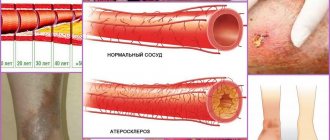Acute pathological uterine bleeding is a common problem faced by practicing gynecologists. Even one-time cases like this sometimes require immediate medical intervention. The causes of this pathology are numerous. To solve the problem and understand how to stop uterine bleeding, it is necessary to take into account the woman’s age, her menstrual function and medical history, risk factors for endometrial pathology and the blood coagulation system.
Etiology of acute abnormal uterine bleeding
The etiology of uterine bleeding can be multifactorial. This pathology is classified as associated with structural abnormalities of the uterus and disorders of the blood coagulation system. This happens for reasons:
- polyp;
- hyperplasia;
- adenomyosis;
- leiomyomas;
- cancer processes of the body and cervix;
- coagulopathies;
- ovulatory dysfunction;
- endometriosis;
- pregnancy;
- iatrogenic factors.
Determining the most likely etiology is important in selecting the most appropriate and effective method of stopping bleeding for a particular patient and is achieved through a history, physical and gynecological examination, and blood tests.
Clinical evaluation of hemostatic disorders in a woman with excessive menstrual bleeding
Initial screening for an underlying hemostatic disorder in these women should be based on their medical history. A positive study result includes the following circumstances:
- heavy menstrual bleeding starting at menarche;
- postpartum hemorrhage;
- operations accompanied by blood loss;
- disruption of the coagulation system during dental treatment.
In this case, the following conditions must be taken into account:
- hematomas once or twice a month;
- frequent nosebleeds;
- constant bleeding from the gums;
- symptoms of coagulopathy in close relatives.
Carrying out diagnostics
To identify the cause of heavy bleeding during menstruation, you need to conduct a comprehensive diagnosis, which includes the following:
- general analysis of urine and blood;
- blood test for hormone levels and tumor markers;
- ultrasound diagnostics;
- hysteroscopy;
- diagnostic curettage.
All these diagnostic procedures help detect inflammation, anemia, impaired blood clotting, tumors, and hormonal disorders. If it is not possible to determine the cause of the disorder, the doctor prescribes a gynecological cleansing, and after that the biological material is sent for examination.
History or anamnesis
Obtaining a thorough medical history is necessary to determine the circumstances surrounding the occurrence of bleeding. This takes into account associated symptoms and past causes of menstrual irregularities, details of gynecological and medical history and data from relevant laboratory and radiological tests.
Up to 13% of women with heavy menstrual bleeding have variant von Willebrand disease, and up to 20% of patients may have bleeding disorders. Other causes of coagulopathies, such as decreased coagulation factors, hemophilia, and platelet dysfunction, can occur in any age group. In addition, systemic diseases such as leukemia and liver failure, as well as medications such as anticoagulants or chemotherapy agents, may reduce clotting and cause bleeding. All this is taken into account in developing tactics for solving the upcoming issue: how to stop uterine bleeding.
Askorutin
Ascorutin is an anti-bleeding drug prescribed for bleeding disorders. It is available in tablet form and contains 2 active ingredients - ascorbic acid and rutoside trihydrate (rutin). This combination of substances helps reduce the permeability and fragility of capillaries, strengthen the walls of blood vessels, accelerate tissue regeneration, and mobilize the body's defenses.
Important information: Why do women have blood clots in their urine during (the end of) urination and what to do to treat the urethra
It is recommended to take Ascorutin 1-2 tablets once a day to prevent bleeding. In complex therapy for bleeding in women, this dosage must be increased 3-4 times and taken 1-2 tablets up to 4 times a day. Ascorutin is contraindicated for taking:
- hypersensitivity to rutin and ascorbic acid;
- increased blood clotting and susceptibility to thrombosis;
- gout;
- diabetes mellitus;
- diseases of the kidneys and urinary tract.
Rutin and vitamin C may enhance, weaken, or neutralize the effects of other medications when taken simultaneously, so you should consult your doctor before starting drug therapy.
Physical examination
Physical examination of a patient with uterine bleeding should begin with an assessment of acute blood loss and the main symptoms, which are hypovolemia, anemia, and findings that suggest the etiology of the disease. The woman's condition should be assessed so that the doctor can determine that she is having uterine bleeding and not bleeding from other areas of the genital tract. Therefore, a gynecological examination, including speculum examination of the cervix and bimanual palpation, should be performed by a gynecologist to identify any injuries to the genitals, vagina or cervix. All this allows us to draw conclusions about what caused the vaginal bleeding. A gynecological examination will also determine the volume, intensity of bleeding, the condition of the uterus, internal genital organs, or structural lesions of the reproductive organ (leiomyoma).
Laboratory research
Laboratory evaluation of patients with this disease is necessary. All adolescents and women are carefully examined for the presence of hemostatic disorders. Taking into account the clinical picture, it is necessary to take into account the pathology of the thyroid gland, liver function disorders, sepsis, leukemia, etc. Taking samples of endometrial tissue should be performed in all women. This is especially true for patients over 45 years of age. Endometrial biopsy should also be performed in women younger than 45 years of age with a history of exposure to unconjugated estrogens (eg, seen in patients with obesity or polycystic ovary syndrome), a primary episode of bleeding, or persistent similar manifestations. The decision as to whether a pelvic ultrasound should be performed should be based on clinical assessment of the findings.
Initial laboratory testing requires:
- clinical blood test;
- determination of group and Rh factor;
- pregnancy test;
- registration of activated partial thromboplastin time;
- prothrombin time;
- determining the amount of fibrinogen;
- initial testing for von Willebrand disease;
- determining the level of thyroid-stimulating hormone;
- detection of serum iron, total iron-binding capacity and ferritin;
- liver function tests;
- detection of chlamydia trachomatis.
Stopping acute abnormal uterine bleeding in non-pregnant women of reproductive age
The initial assessment of a patient with acute abnormal uterine bleeding should include testing for signs of hypovolemia and potential hemodynamic instability. Measures to stop bleeding include intravenous administration of conjugated estrogens, combined oral contraceptives, oral progestins and tranexamic acid. Decisions should be based on the patient's medical history and the presence of contraindications to therapy. Surgery should be considered for those women who are not clinically stable. The choice of surgical intervention should be based on the patient’s presence of concomitant diseases underlying the pathology and the woman’s desire to have children in the future. Once the acute bleeding episode has resolved, transition to long-term maintenance therapy is recommended.
Uterine bleeding is defined as bleeding from the body of the uterus when it is abnormal in regularity, volume, frequency or duration and occurs in the absence of pregnancy. This pathology can be acute or chronic. Acute bleeding is a situation that requires immediate intervention to prevent further blood loss. The acute process can occur spontaneously or in conditions of chronic hemorrhage or bleeding. A general assessment of a patient who has this pathology should take place in three stages:
- determination of the amount of blood loss;
- determining the most likely etiology;
- choosing the appropriate treatment.
Treatment
Limited evidence, expert opinion and guidelines address the question of how to quickly stop uterine bleeding. The choice of treatment method depends on the clinic and etiology, taking into account the underlying medical problems. The two main goals of management are control of bleeding and monitoring to reduce menstrual blood loss in subsequent cycles. Drug therapy is considered the preferred primary treatment option. However, certain situations may require surgical intervention.
Basic drugs
How to stop uterine bleeding? The drugs used for this purpose are hormonal drugs. They are considered the first line of drug therapy for patients with acute bleeding. Treatment options include combined oral contraceptives and oral progestins.
Antifibrinolytic drugs, such as tranexamic acid, are used to prevent fibrin degradation and are effective in treating patients with any form of bleeding. Tranexamic acid effectively reduces the rate of intraoperative blood loss and removes indications for blood transfusion in surgical patients.
Patients with bleeding disorders or those suspected of having excessive bleeding may develop unpredictable reactions to hormonal and non-hormonal treatments. For such patients, consultation with a hematologist is recommended, especially if the bleeding is quite difficult to control or the gynecologist cannot independently cope with this pathology. Desmopressin may help treat patients with von Willebrand disease if the woman is known to respond to the drug. It can be administered by intranasal inhalation, intravenously, or subcutaneously. This medication should be used with caution due to the risk of fluid retention and hyponatremia. It should not be given to patients with massive bleeding receiving intravenous resuscitation. Recombinant factor VIII and von Willebrand factor are also available and may be necessary to control major bleeding. Other deficiency factors may require factor-specific replacements.
Patients with bleeding disorders or platelet function disorders should avoid nonsteroidal anti-inflammatory drugs due to their effects on platelet aggregation and their interactions with substances that may affect liver function and the production of clotting factors.
What medications should I take for heavy periods?
If significant bleeding occurs due to hereditary predisposition or hormonal disorders in the body, then contraceptive drugs come to the rescue. They will help not only reduce blood loss, but also normalize the menstrual cycle.
Important! Contraceptive drugs should be selected strictly on an individual basis after taking a blood test for hormones!
However, having decided to take such drugs, a woman must understand that she will not get immediate results. Moreover, during the first few months she may experience increased bleeding during menstruation or occur on any other day of the cycle. This reaction of the body to contraceptive drugs is natural, and can last until complete adaptation takes place (about 2-3 months). After this, your periods should normalize, become more scanty and regular. You can take these medications for about a year.
Among the contraceptive drugs, the most popular among women are:
- Rigevidon;
- Novinet;
- Regulon;
- Yarina;
- Jess Plus.
If the patient does not want to take contraceptives, non-steroidal anti-inflammatory drugs will help her cope with heavy menstruation. Numerous studies show that they can reduce blood loss by 30%. Among these medications, Ibuprofen is the safest and most effective. Its use helps not only to reduce the amount of blood released during menstruation, but also to relieve a woman of abdominal discomfort.
Important! Non-steroidal anti-inflammatory drugs should not be taken if you have stomach diseases!
After taking Calcium Gluconate, bleeding should also decrease. It is recommended to take these tablets 15-20 minutes before eating 2-3 times a day. The components included in their composition reduce vascular permeability, which accelerates the process of blood clotting. However, after calcium gluconate, it is necessary to take Ascorutin. This product contains vitamins and helps improve blood circulation.
To reduce heavy bleeding during menstruation, you can use another drug - Dicinone. Doctors prescribe it in hospital settings to quickly relieve such conditions that arise during operations, injuries, etc. However, they administer this drug intravenously. At home, it is recommended to take this drug in tablet form. But their effect begins only 2-3 hours after administration.
To reduce bleeding during menstruation, you can use Tranexam. This drug has a strong hemostatic effect, but it also has a huge number of contraindications. Therefore, you should take the product only after carefully studying the instructions and prior consultation with your doctor.
Surgery
How to stop uterine bleeding with endometrial hyperplasia or fibroids? The need for surgical treatment is based on the patient's clinical stability, severity of bleeding, contraindications to therapeutic treatment, lack of response to medications, and comorbidities. Surgical options include endometrial dilation and curettage, endometrial ablation, uterine artery embolization, and hysterectomy. The choice of surgical intervention method is made based on the above factors plus the patient’s desire to preserve fertility in the future.
Specific procedures, such as hysteroscopy, polypectomy, myomectomy, may be required if structural abnormalities are suspected as the cause of the identified pathology. And therefore, the question of how to stop uterine bleeding with fibroids or polyposis is being resolved in favor of surgical methods. Dilation and curettage alone (without hysteroscopy) is an inadequate means of assessing uterine distress and may provide only a temporary reduction in bleeding. If they are performed with concomitant hysteroscopy, then this may be important for those patients in whom intrauterine pathology is suspected, or it is desirable to obtain a tissue sample to identify certain processes. Case reports of uterine artery embolization and endometrial ablation have shown that these procedures are successful in treating bleeding. Endometrial ablation, although readily available in most centers, should only be considered if other treatments have failed or are contraindicated. This procedure should only be performed when the woman has no plans for future childbearing and uterine cancer has been reliably ruled out as a cause. Hysterectomy is used as a definitive treatment to control heavy bleeding, which may be necessary for patients who do not respond to drug therapy.
Thus, it was listed in what ways and how uterine bleeding is stopped in the hospital.
Drug treatment
How to stop bleeding during menstruation with clots is decided by the doctor strictly individually. It all depends on the cause of its occurrence. Taking medications on your own is strictly prohibited, as this can be harmful to health. If the disorder is not too severe, the patient may be prescribed medications such as:
- "Dicynon";
- "Ascorutin";
- "Calcium gluconate".
The drug "Ditsinon" acts very quickly. Menstruation becomes moderate three hours after taking the medicine. A drug is also prescribed to prevent severe discharge. Intravenous administration of the drug gives results within 20 minutes. Side effects include hypotension, itching, heartburn, rashes, and nausea.
The drug "Ascorutin" helps strengthen blood vessels, due to which the body loses much less blood. It has a cumulative effect, which is why heavy bleeding in women can be stopped only with regular use for at least 3 weeks. That is why tablets are often recommended as a preventive measure for uterine bleeding and after surgery.
The drug "Calcium Gluconate" increases blood clotting and also reduces vascular permeability. Initially, the drug is administered intravenously at a dosage of 5-15 ml. Then the medicine is prescribed in tablet form up to 6 times daily.
Additionally, it is recommended to take the drug "Vikasol". It is a source of vitamin K. This is the main component of protein involved in regulating blood clotting processes. Medicine is prescribed only if it is determined that the cause of heavy menstruation is considered to be a lack of this vitamin in the body.
Very severe bleeding can be stopped with the help of the drug Tranexam. This remedy additionally has an analgesic, anti-allergenic, and anti-inflammatory effect. A side effect may be the formation of blood clots.
Additionally, the doctor prescribes hormonal medications. The doctor selects a treatment regimen separately for each woman, depending on the diagnosis. New generation hormonal contraceptives are successfully used in gynecology to eliminate disorders of the reproductive organs, restoring their function. This is a good prevention of tumor tumors.
There are strong drugs with a high estrogen content, as well as mild drugs intended for nulliparous women. Among the most popular drugs are “Rigevidon”, “Novinet”, “Jess”. Contraceptives do not give quick results, but restore the normal cycle gradually.
It is recommended to use preparations with iron. This will prevent the development of anemia. Additionally, drugs with anti-inflammatory properties are used, which affect the duration of blood flow.
Bleeding during pregnancy
If there is a threat of miscarriage, severe uterine bleeding with clots occurs. How to stop it, is it possible to maintain the pregnancy? Only a doctor will decide this after additional research. If the fetus is not injured and its heartbeat is clearly visible on ultrasound, this is a chance to save the child by stopping the bleeding with antifibrinolytic and preservative agents. Therefore, the answer to the question, “how to stop uterine bleeding at home?”, with such a pathology, can only be obtained from an obstetrician, after visiting the hospital. It is strictly contraindicated to prescribe or do anything on your own, as this can lead to adverse consequences not only for the fetus, but also for the mother.
Traditional medicine
At home, you can easily reduce bleeding on critical days, without even leaving home to the pharmacy or hospital. Today, many effective and safe folk remedies are known to combat heavy periods:
- Decoctions of stinging nettle leaves. They are prepared quickly and simply: just pour 20 grams of dry leaves with one glass of boiling water. You need to drink the decoction in small portions - 2 tablespoons every three hours until normal monthly bleeding is completely restored.
- A tincture based on a whole mix of medicinal plants. For this you need dry herbs of yarrow and shepherd's purse, cinquefoil roots and oak bark. Each ingredient is taken in a volume of no more than 20 grams (a spoonful of herbs). All of them are mixed and poured with 500 ml of boiling water. After 40 minutes, you can start taking the resulting “cocktail”, 1 tablespoon half an hour before meals (twice a day).
- Alcohol tinctures of barberry and lilac flowers. They have a beneficial effect on blood vessels, increase hemoglobin, reduce blood loss and affect the duration of menstruation.
The voiced recipes for preparing medicines are quite simple, but the required ingredients are not always at hand. That is why, as an alternative, you can also consider decoctions based on orange peel. The zest is placed in water, boiled for 10 minutes and can be taken as a pleasant drink and a tasty analogue to tea 2-3 times a day.
See also: Why after 40 years - scanty periods
Breakthrough uterine bleeding
How to stop breakthrough uterine bleeding using medications? You should not do this yourself or prescribe medications. Only a gynecologist can help you choose a remedy that will reduce the intensity of bleeding. Such pathologies most often occur while taking hormonal drugs and are characterized by large blood loss. This usually results in uterine bleeding with clots. How to stop, what medications to take if there is a failure in taking the pills or the body reacts incorrectly to the administered hormones? All this should be resolved in the gynecological department. With this blood loss, a high level of estrogen is determined, which provokes the endometrium to grow and be rejected. How to stop uterine bleeding of this nature can only be advised at the antenatal clinic. Depending on the age of the patient, three-phase contraceptives are prescribed, or for older women - progestins. In this case, hemostatic agents and antifibrinolytic drugs are used.
Causes of menstruation with clots
This condition often frightens a woman very much, especially if it occurs frequently and over a long period of time. The causes of heavy bleeding during menstruation with clots can be associated with various types of disorders. The main pathologies and conditions include the following:
- endometrial hyperplasia;
- uterine fibroids;
- hormonal disorders;
- spiral in the uterus;
- excess of B vitamins.
Endometrial hyperplasia is characterized by significant growth of the endometrium. This problem is most often observed with hormonal disorders, diabetes, hypertension, and obesity. Uterine fibroids are benign tumors. It provokes menstrual irregularities, as well as heavy and painful periods with blood clots.
Endometrial polyposis can also cause this condition. At the same time, its cells grow and can reach quite large sizes. Heavy bleeding with clots may occur after childbirth. This is considered the norm. However, if the temperature rises, this may indicate that there are parts of the placenta remaining in the uterus, so it is worth visiting a doctor.
If severe bleeding with clots occurs, the reasons for this may be anatomical disorders in the uterus or other anomalies that interfere with the normal outflow of secretions. Brown menstruation is mainly observed in cases of anemia.
Red blood in large quantities can indicate uterine bleeding, which poses a great danger to the patient’s life, so you need to urgently go to the hospital. If menstruation is accompanied by fever and abdominal pain, this may indicate an ectopic pregnancy.
Severe bleeding with clots can occur in women who abuse alcohol, smoke, and are also subject to constant stress.
Endometrial hyperplasia
How to stop severe uterine bleeding with hyperplasia? This issue can also be resolved only by a doctor. If a woman has recently undergone curettage of the uterine cavity and received a histological result in favor of a diagnosis of hyperplasia, then only progestins are indicated, depending on the menstrual cycle in a continuous or intermittent mode. If there is a suspicion of hyperplasia, then stopping the bleeding is done surgically. Curettage of the uterine cavity is performed. Subsequent treatment occurs with the use of gestagens.
Uterine bleeding during menopause
How to stop this bleeding? In this case, the entire arsenal of surgical methods is used, hemostatic and intensity-reducing medications are used, as well as various hormonal drugs.
During perimenopause, the most common cause of abnormal bleeding is a change in hormonal levels that interferes with ovulation. Regular but much heavier periods are very common in the years leading up to menopause. For women over 40 years of age, low doses of birth control pills will help control heavy uterine bleeding. How can you stop it and address other perimenopausal symptoms, including hot flashes, night sweats, premenstrual syndrome and headaches? The use of tablet contraceptives will help with this when used on an ongoing basis. After age 50, hormone replacement therapy (which consists of lower doses of estrogen and progesterone than the pill) can eventually wean the patient off hormones altogether if menopausal symptoms gradually improve.
During perimenopause, some people choose not to take birth control pills, so other conservative methods of stopping bleeding may be used in this case. The Progesterone IUD is one such option, and it offers an excellent option for birth control that can last for five years. The device releases progesterone hormone, which works in the lining of the uterus, resulting in menstruation without complications. The IUD is the preferred option for women who need a reversible method of contraception.
How to stop uterine bleeding surgically? Endometrial ablation is a minimally invasive procedure that has a proven track record of treating heavy perimenopausal bleeding and may even help some patients avoid a hysterectomy. Ablation procedures have been used quite successfully to reduce the amount of bleeding, in some cases leading to a complete stop of the menstrual cycle. This procedure is not a birth control method and is only used for women who have completed childbearing.
For patients who have not responded to medications and less invasive options, this perimenopausal surgery may be the best option for stopping uterine bleeding. For endometriosis, fibroids, hyperplasias, and polyps, hysterectomy is the most preferred method for women with such changes. At the same time, amputation of the uterus is possible using various options. The doctor should know the concomitant diseases of such a woman.
Exercises
If a woman knows that the cause of severe blood loss during menstruation is caused by a gynecological disease, then engaging in any physical activity during this period is strictly prohibited. However, if this is an irregular phenomenon, you can still maintain tone with light exercises. During menstruation, changes in hormonal levels and blood composition occur in the body, so endurance decreases and long-term exercise becomes more difficult. If you have heavy periods, you should not perform the entire range of standard exercises: you should limit yourself to breathing exercises and warming up the shoulder girdle without gymnastic equipment and dumbbells.
The amount of physical activity should be limited, although some exercises, on the contrary, will have a beneficial effect and reduce bleeding. These include:
- classic stretching;
- some yoga asanas;
- smooth movements from Wushu gymnastics.
See also: What to do if you have very heavy bleeding during menstruation
Please note that the warm-up should take place in a well-ventilated area, and clothing should be comfortable and light. The main thing is that the exercise is short and eliminates stress on the abdominal muscles. On critical days, sudden rises, running, jumping, swimming in the pool and the use of weight training equipment are prohibited. If you feel unwell or uncomfortable during exercise, stop exercising immediately.
How to stop uterine bleeding at home
Bleeding in any case requires contacting a doctor to determine the cause and prescribe adequate treatment. Before the ambulance arrives, you must take a horizontal position and raise your legs. You can place a heating pad with ice on your lower abdomen. Compresses and warming procedures are strictly contraindicated. How to stop uterine bleeding at home, what decoctions and preparations can be used? This is well known to older women. “Vikasol”, “Ditsinon”, “Oxytocin”, “Tranexamic acid” - these are the drugs that every woman should have in her first aid kit. These medications help in deciding how to stop uterine bleeding at home.
What are the features of stopping uterine bleeding?
The uterus is a completely unique organ, bleeding from which has a specific character. The spiral arteries that supply blood to the uterus are almost completely devoid of muscle layer, and therefore are not able to contract on their own. Instead of a muscular layer, the lumen of the arteries is compressed by a thick muscular layer of the uterus itself. Therefore, if for some reason the uterus is flabby and atonic, then the bleeding cannot be stopped without reducing agents.
Endometrial arteries
The main source of bleeding in the uterus is its internal mucous membrane - the endometrium. This layer, being shed every menstrual cycle, after pregnancy and childbirth, exposes the spiral arteries and causes them to bleed. Pathology of the endometrium itself or the hormonal background that supports it can cause extremely heavy bleeding, which cannot be stopped without hormonal drugs.
The structure of the female reproductive system. Click on photo to enlarge
Various inflammatory processes of the female genital organs play a major role in the occurrence of uterine bleeding. The inflammatory process triggers special mechanisms that reduce blood clotting and prevent uterine contractility.
Below we will try to highlight several blocks, in each of which we will talk about the possible cause of the problem and how to stop a specific type of uterine bleeding.
Folk remedies
Traditional medicine recipes are used in the treatment of many diseases. How to stop uterine bleeding with folk remedies? This question interests both young girls and older women. Most often in this case, a decoction of nettle leaves, yarrow, shepherd's purse, and tincture of water pepper is used. Decoctions are also prepared from cucumber vines, jasmine, and peppermint. However, such treatment can only be used as an auxiliary method and only after consultation with a doctor.
Oxytocin
As an emergency treatment for female bleeding, doctors often prescribe intravenous administration of Oxytocin, a solution containing the active substance of the same name. The drug belongs to the group of hormonal drugs that have a stimulating effect on the uterus.
Important information: Why does bleeding occur while taking Visanne?
The main indications for the use of Oxytocin are:
- stopping heavy bleeding during menstruation and in the periods between them;
- prevention of bleeding with weak uterine tone;
- control of postpartum hemorrhage;
- planned induction of labor;
- as an aid in treatment and diagnostic testing in gynecology.
With the help of Oxytocin, you can stop uterine bleeding in a matter of minutes. However, the drug must be administered only under the supervision of a physician, constantly monitoring blood pressure, heart rate, balance between fluid intake and output, and uterine tone.
A hemostatic agent can prolong or shorten the duration of action of certain medications and has a number of side effects and contraindications. The dosage and frequency of administration in each case are determined individually.











